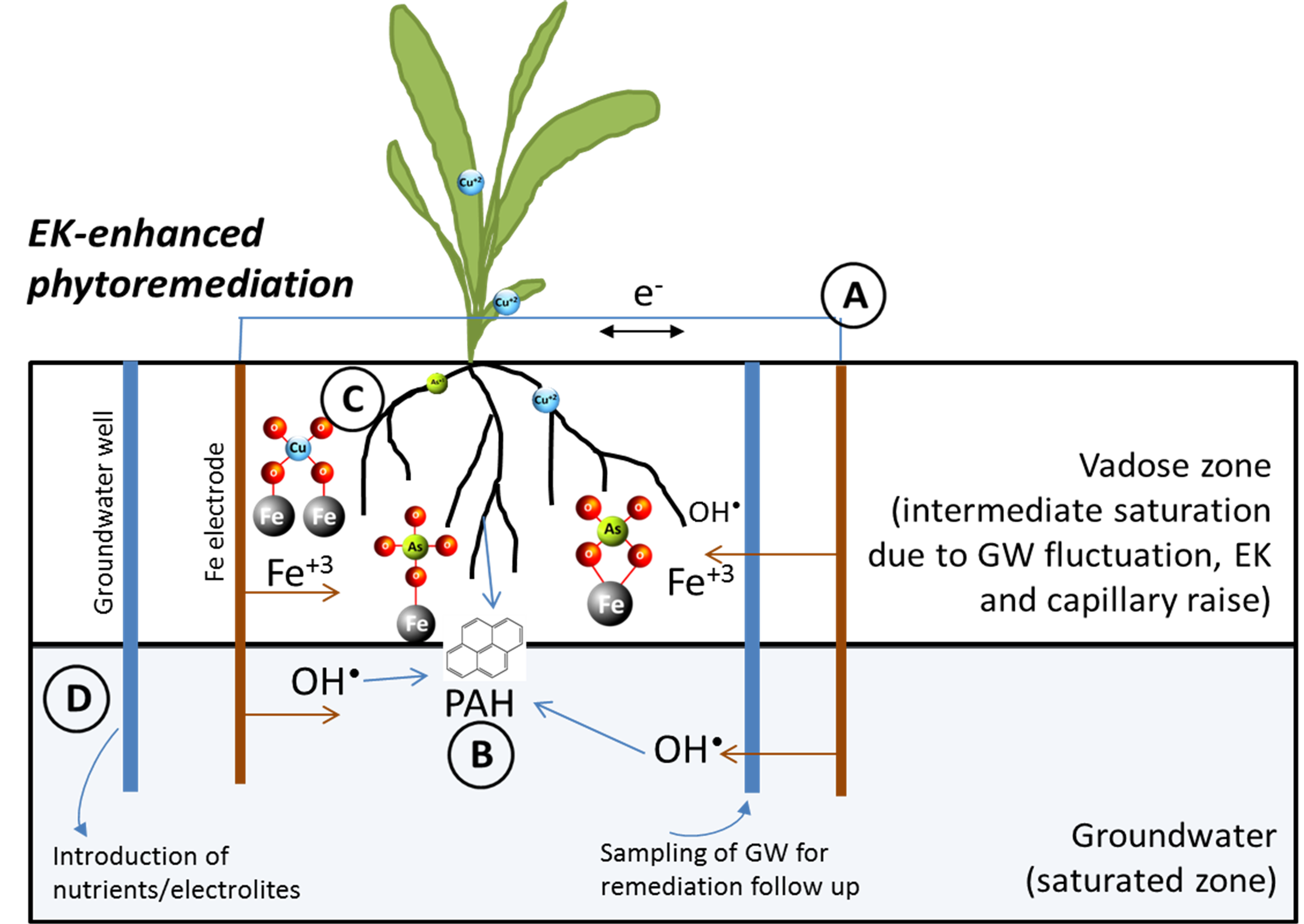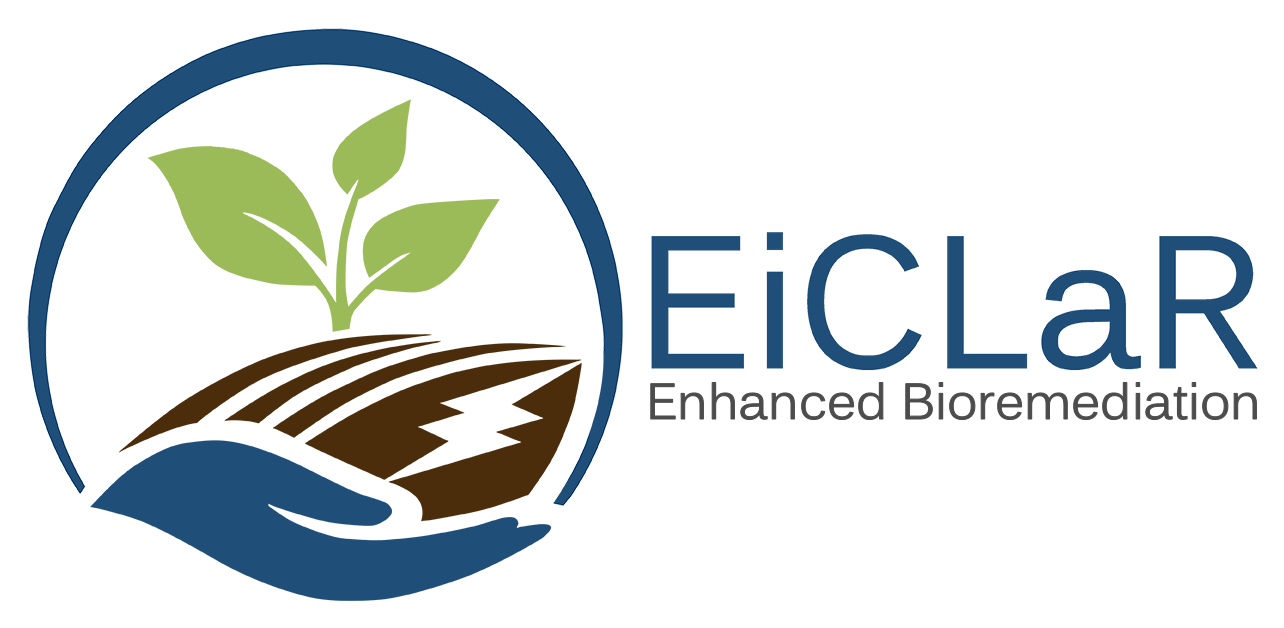This group of technologies combines electrokinetically stimulated in situ redox reactions and enhanced mobility with phytoremediation to provide low input remediation of hydrocarbons, including some persistent types, in parallel with immobilisation of trace elements (primarily arsenic). The treatment is intended for use on large area sites combining plant-supported in situ biodegradation in the rooting zone with deeper treatment by chemical degradation, and plant-based management of fugitive VOCs from that process. The use of sacrificial iron electrodes can also be included to immobilise some trace elements in situ with iron oxide complexes. Mycorrhizal fungal amendments are being considered to support plant establishment and to provide lignase-based bioremediation to target recalcitrant compounds such as PAHs. The Chinese research partners are studying combined phyto- and bioremediation approaches to manage PAHs and chlorinated aliphatics in the unsaturated zone.
This technology is best applied on humid soils of finer texture (from fine sand to clay) and to depths down to ca 10 m. PAHs can be treated throughout the soil profile, while for immobilisation of arsenic it is important to have a natural infusion of oxygen either by air penetration through vadose zone or through oxygenated groundwater, thus shallower contamination is preferred. To speed up of PAH degradation, biostimulation through injection of nutrients is recommended. Access to electricity is preferred, but using solar panels in remote areas is also possible.Â

(A) Iron electrodes are inserted through the vadose zone into the groundwater layer and a range of EK inputs are applied using pulsed DC current.
(B) Bioavailability and biodegradability of recalcitrant organic contaminants increases by free radicals from EK, which accelerates phytoremediation through rhyzodegradation. AMF helps plant establishment, adds to biostimulation, and potential lignase activity.
(C) Mobile and bioavailable fractions of metal(loid)s are immobilized through co-precipitation with iron provided by sacrificial iron electrodes. EK further modifies soil conditions (supply of oxygen, decreased contaminant toxicity) to favor plant establishment.
(D) Nutrients are supplied to deeper soil layers to enhance microbial processes at depth. Vertical integration PR favoured at shallow depth, EK works at a deeper level.
